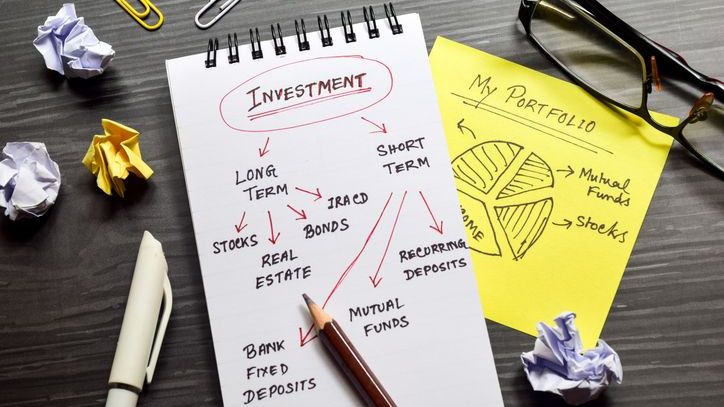Your financial objectives and risk tolerance will primarily dictate how you structure your portfolio. But you’ll also want to consider taxes and fees, your potential lifespan, need for long-term care and desire to leave an inheritance behind.
Many people who are approaching retirement adopt a bucket structure designed to fund their short-, intermediate- and long-term objectives with a mix of cash, stocks and bonds. You can also choose from traditional asset allocation, core-and-satellite and other approaches.
Portfolio Structure Considerations
Suppose you’re 65 years old, have a $1.1 million portfolio and plan to retire soon. To figure out how to structure your portfolio, start by considering three key issues:
- Objectives: Think about your short- and long-term goals. What kind of retirement lifestyle do you envision? How much income will you need from your portfolio, along with other income sources, to pay for it? Do you want to leave a financial legacy?
- Risk: Ask yourself how comfortable you are with fluctuations in the returns on your investments. Can you resist the impulse to sell if the market slumps? Will you want to increase withdrawals during a boom?
- Costs: Thinking about ways to reduce taxes and fees can help your investments perform to their potential. For instance, you can minimize both taxes and fees with core holdings consisting of low-cost, passively managed index funds.
Common Portfolio Structures

For people approaching retirement, a bucket strategy combined with traditional asset allocation is a popular choice. This approach typically divides your portfolio into three buckets. Each bucket holds assets that are invested accordingly for short-, intermediate- and long-term goals in retirement.
- Short-term bucket: This category is designed to work with other steady income streams, like Social Security and pensions, to cover your expenses for the first two years of retirement. It is typically invested in insured savings accounts or other secure, liquid options. This approach helps you manage your bills without being affected by market fluctuations.
- Intermediate-term bucket: This bucket holds investments that you intend to liquidate and turn into cash within three to 10 years. The assets in this bucket may include longer-term bonds, preferred stocks, growth and income funds and other fixed-income investments. The income from this pool of investments can be used to replenish the short-term bucket as it’s drawn down.
- Long-term bucket: This portion of your portfolio is invested for the long haul. It’s where you’ll invest in stocks and other riskier assets. Your long-term bucket will hold money that you won’t need until at least a decade into retirement.
Asset Allocation
How you spread your assets across different types of assets requires assessing your risk tolerance, projecting inflation and taxes and adopting strategies for managing fees. It also involves accounting for your life expectancy and addressing concerns about potential costs for long-term and other healthcare.
Many retirees use low-cost index funds to allocate assets among stocks and bonds. Index funds address risk by increasing diversification while maintaining the opportunity for market-matching performance. These passively managed investments also typically cost less in taxes and fees than actively managed approaches.
Asset allocation often changes with time. For instance, in your early years of retirement, you may have an allocation consisting of 5% cash, 35% bonds and 60% stocks. After a decade, you may transition to a more conservative approach with 10% cash, 40% bonds and 50% stocks. In your later years, a conservative allocation of 30% cash, 20% bonds and 50% stocks might be appropriate.
Diversified portfolios typically include a core of at least 50% stocks in part because equities alone offer the potential to generate long-term returns exceeding inflation. Bonds are also included because they can help buffer the effects of market fluctuations so a portfolio declines less in bad markets than it gains in good markets.
The long-term bucket provides the potential to significantly increase the size of your nest egg thanks to investment earnings. It can serve as the source of a financial legacy for your heirs or provide additional funds in case you need costly long-term care. Keep in mind that a financial advisor can help you with legacy planning or planning for long-term care.
Bottom Line
How you structure your portfolio will principally reflect your financial objectives and risk tolerance while also considering taxes, fees, life expectancy and other potential needs. People nearing retirement often favor a bucket structure combined with traditional asset allocation.
Retirement Portfolio Tips
- When you’re sitting down to structure your retirement portfolio, tap the expertise of a financial advisor. Finding a financial advisor doesn’t have to be hard. SmartAsset’s free tool matches you with up to three vetted financial advisors who serve your area, and you can have a free introductory call with your advisor matches to decide which one you feel is right for you. If you’re ready to find an advisor who can help you achieve your financial goals, get started now.
- SmartAsset’s asset allocation calculator can help you pick a a mix of stocks, bonds and cash that suits your risk tolerance.
Photo credit: ©iStock.com/svetikd, ©iStock.com/Debalina Ghosh, ©iStock.com/Pekic
Read the full article here

